Differential Staining of Cartilage & Bone
In this part of the lab, we cover all things bones (and cartilage but mainly bones). From cells all the way to bone structure, understanding different components and functions of bones. Perhaps answer the question of why calcium is important to our bones and why we drank milk when we were younger.
To understand the technical process of staining and preserving of samples, we stain and observe different developmental stages of a rat sample. Observing the changes of certain structures from cartilage to bone as development takes place.
We also cover the procedure and the chemical reasoning behind the staining while using the Alcian blue and Alizarin red stains. Moreover, understand why certain structures stain red while others stain blue, the enigma of the stains.
Important notes
Before we start about the topic, let's do a terminology introduction along with some basics.
- Bone and Cartilage are two different structures composed of different components. One of the main differences is that bones are highly vascular while cartilage is not.
- The process of bone development is known as ossification (or osteogenesis).
- Osteo – refers to anything related to bones. (the fancier medical term of bones)
- There are three cell types: osteoblast, osteocytes and osteoclasts involved in development, growth and remodeling of bones.
- Osteoblast – are bone-forming cells.
- Osteocytes – are mature bone cells.
- Osteoclasts – are cells responsible for bone remodeling.
- There are 2 types of ossification: Intramembranuous ossification and Endochondral ossification.
The Principle of Stains
Stains are important for the identification of certain structures by colouring them a specific colour. In this case it's either red or blue. There are many different types of stains depending on the staining procedure. For this lab we used differential stains which are Alcian blue and Alizarin red, it is called differential stains because these stains allow us to differentiate between different structures such as the bone and cartilage.
The Alizarin red stain is an anionic stain (aka negatively charged) which binds to positively charged ions thus staining it red. Bony structures will stain red, but why? It's because our bones contain high amounts of calcium (Ca++), a positively charged ion. Going back to our basic chemistry concept of opposites attract, a negatively charged ion will bind to a positively charged ion.
While the Alcian blue stain is a cationic stain (aka positively charged) which binds to structures such as glycoproteins and sulfated glycosaminoglycans (GAG) staining it blue. So cartilage structures will stain blue, but why? The same concept apply.
Interestingly, in early stages of rat development most of the structures are stained blue meaning that it is cartilage but as the rat grow and develop, the cartilage structures transform into bony structures which is then stained red.
Stains play a crucial role when trying to study, understand and learn bone development among other important processes.
Now that we covered the principle of stains let’s look at these stained samples, note the differently stained structures from red to blue.
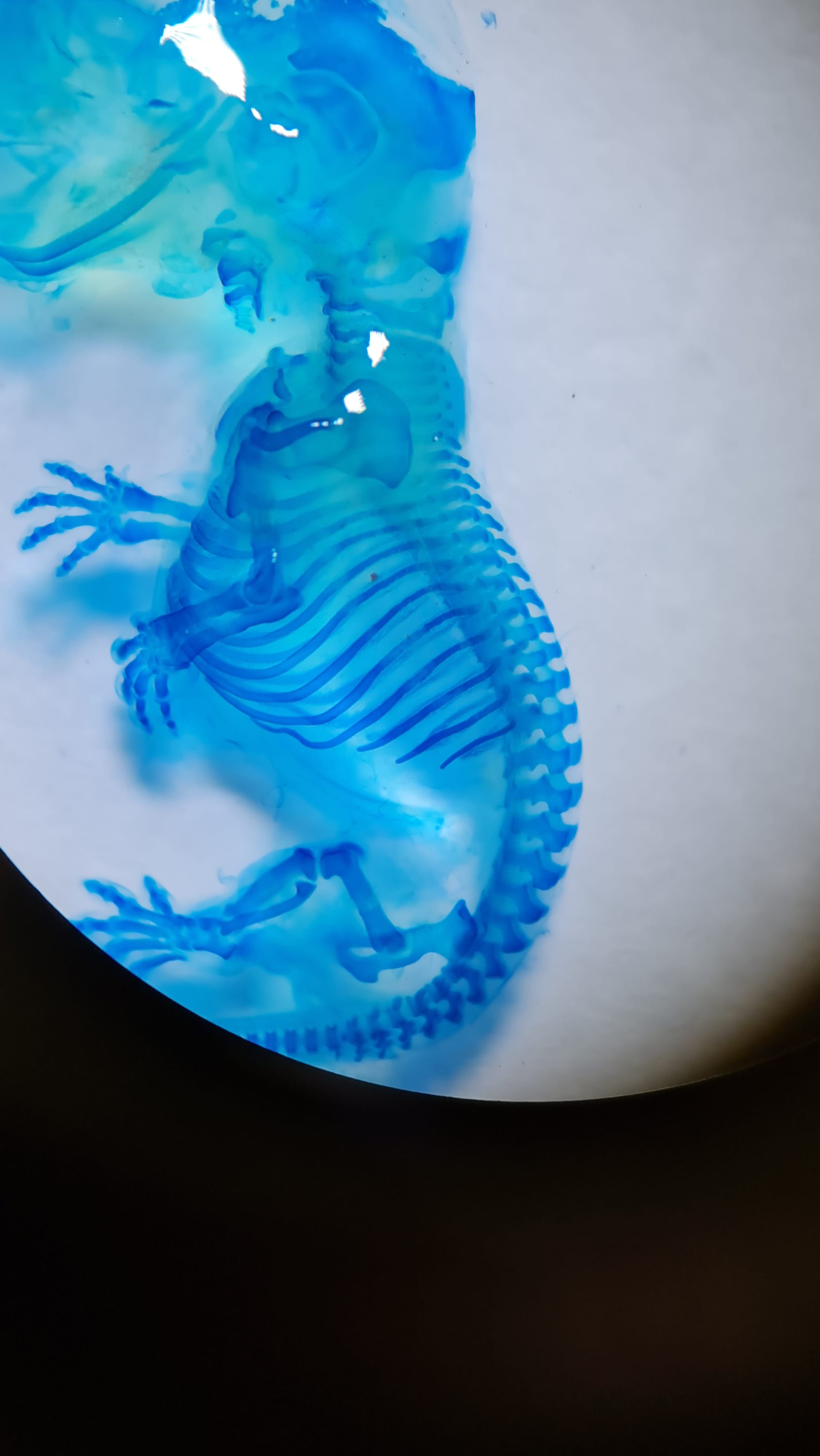
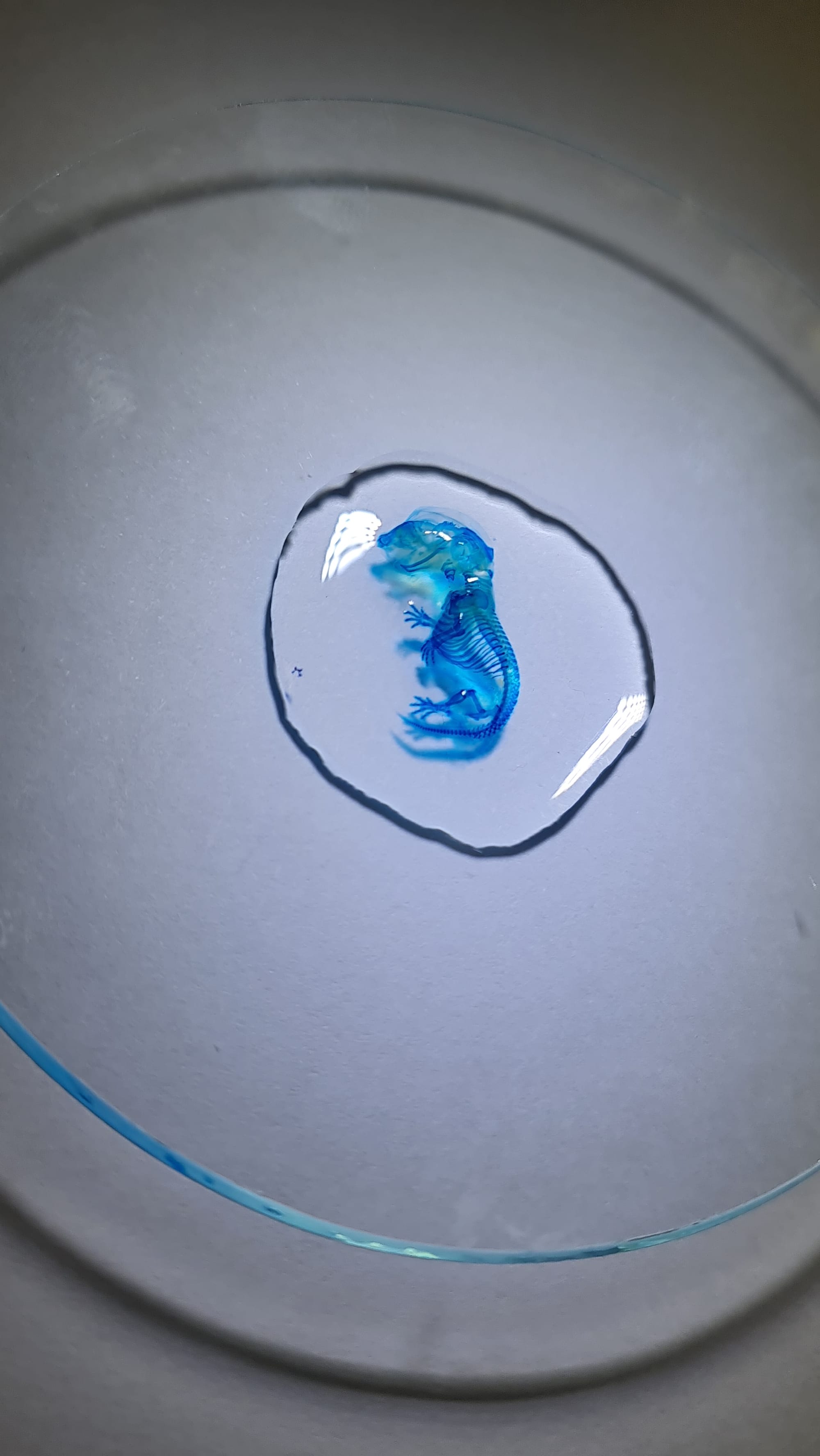
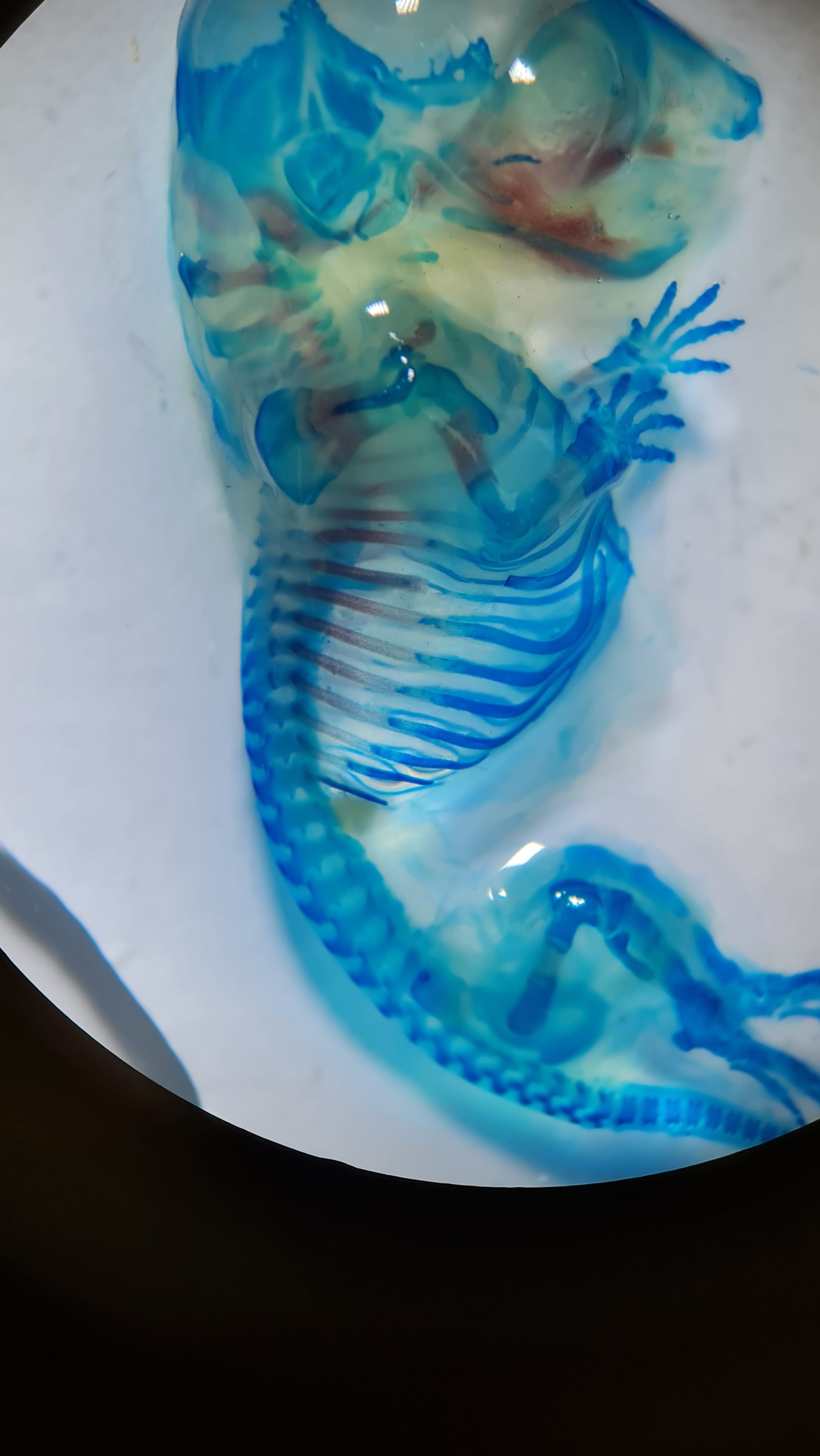
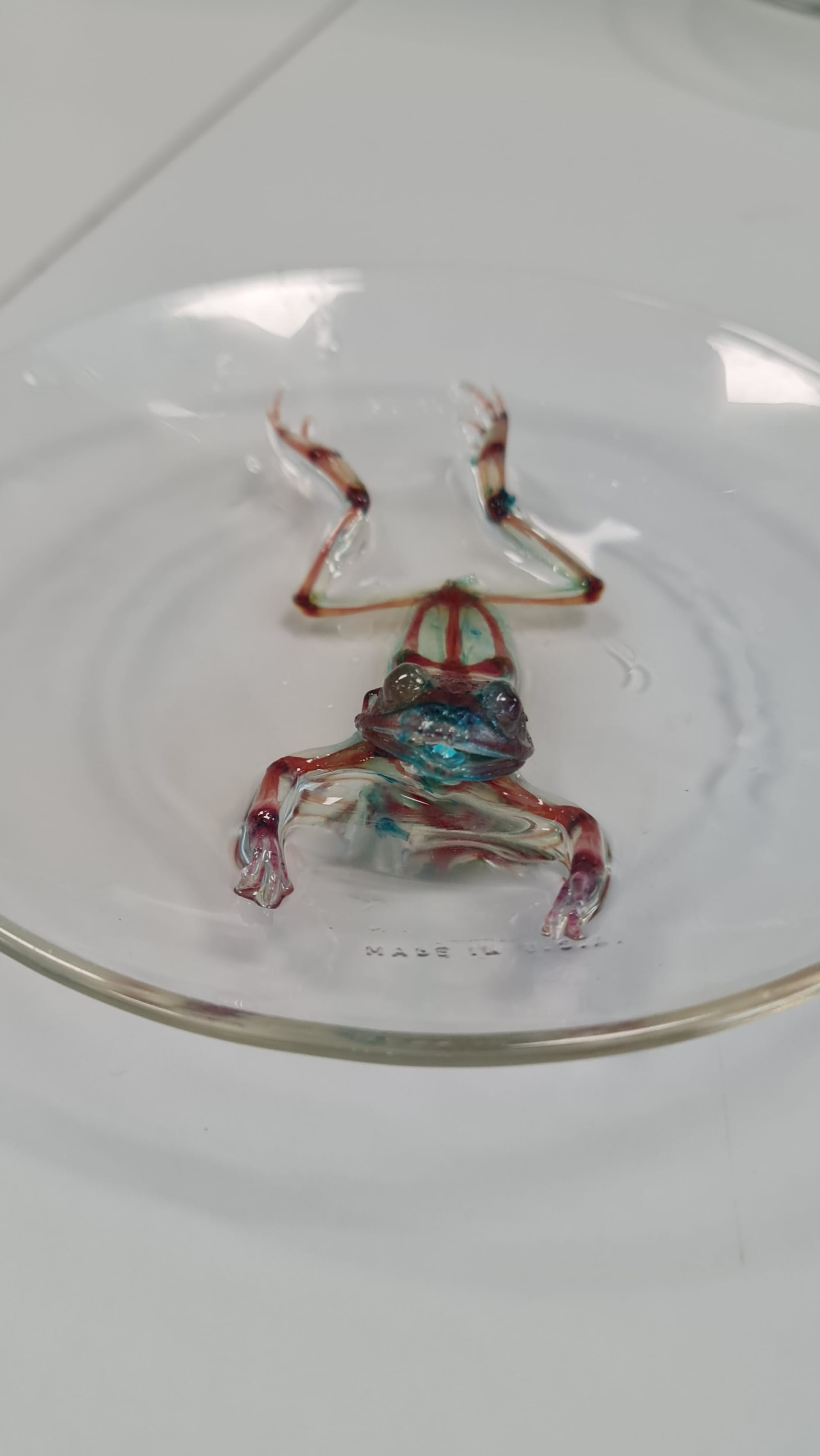
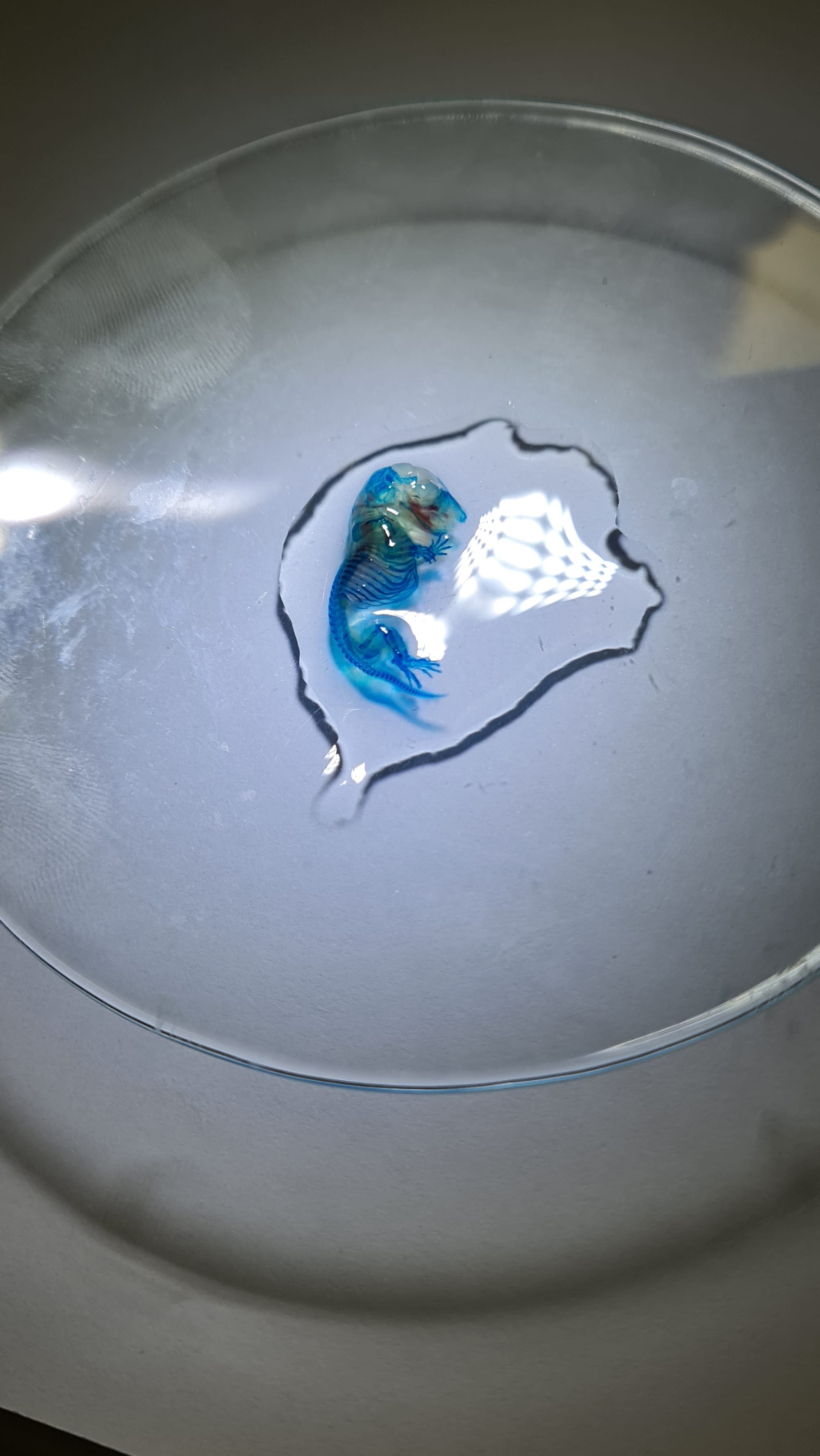
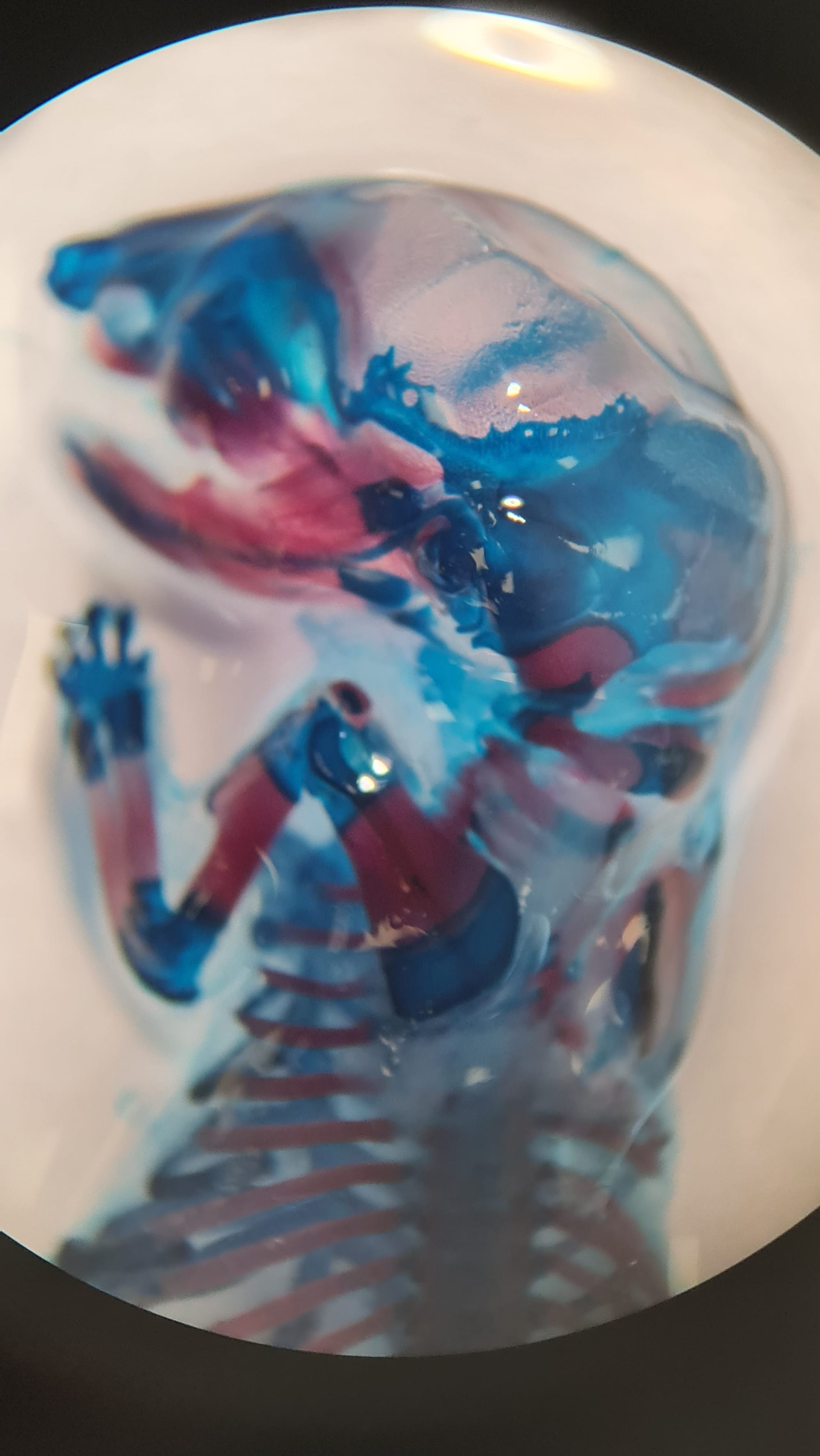
Staining of bone and cartilage using the Alcian blue and Alizarin red for different developmental stages. (The lower left is a stained frog while the others are of a rat)
Check the pdf file below to know the specific steps of staining!
Types of Osteogenesis
- Endochondral ossification
This type of ossification takes place within cartilage model which occurs in many parts of the skeleton.
- Intramembranuous Ossification
This type of ossification takes place within fibrous connective tissue which occurs in many flat bones.
Check this file of my notes for the laboratory course! It includes everything from both the theoretical and the practical work that was done regarding the topic "Differential Staining of Cartilage & Bone".
You can use this as a guide when studying this topic. You can download it and customize it to further understand this topic. You have the choice to make it more colourful by highlighting some keywords or even add more information.
This includes all the covered topics with specific illustrations to facilitate the understanding of certain topics such as the specific structural changes that occurs during bone formation and remodeling.
Feel free to share your customized copies with me on my instagram account or on my email! I look forward for your creative learning approaches.
